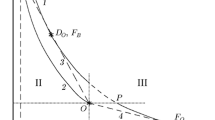Abstract
A comparative analysis is performed of the variation of the gas-dynamic parameters and of the dynamics of formation of nitrogen-containing components during combustion ofCH 4 + air andH 2 + air mixtures in supersonic flow behind a shock wave. The sizes of the induction and combustion zones at different initial values of the Mach number of are calculated and the possibility of reduction of the kinetic scheme in describingCH 4 + air detonation behind a shock wave is considered.
Similar content being viewed by others
References
M. J. Ostrander, J. C. Hyde, M. A. Young, and R. O. Kissinger, “Standing oblique detonation wave engine performance,” AAIA Paper No. 87-2002, New York (1987).
T. Takeno, T. Uno, and Y. Kotani, “An experimental study of shock induced combustion of hydrogen,”Acta Astronaut.,6, Nos. 7 and 8, 891–915 (1979).
J. P. Drummond, C. R. Rogers, and J. S. Evans, “Combustor modeling for scramjet engines,” in:AGARD Conf. Proc., No. 275, (1979), p. 10-1.
T. C. Yip, “Ignition delay and characteristic reaction length in shock induced supersonic combustion,” AAIA Paper No. 89-2567, Washington (1989).
N. G. Dautov and A. M. Starik, “On the problem of choosing a kinetic scheme for description of detonation in an H2 + air mixture behind shock waves,”Teplofiz. Vys. Temp.,31, No. 2, 292–301 (1993).
T. M. Sloane, “Ignition and flame propagation modeling with an improved methane oxidation mechanism,”Combust. Sci. Technol.,63, Nos. 4–6, 287–313 (1989).
M. Frenklach and D. E. Bornside, “Shock-wave ignition of CH4(CH4)/C3H8-O2-Ar mixtures,”Combust. Flame,56, No. 1, 1–27 (1984).
W. Tzang and R. F. Hampson, “Chemical kinetic data base for combustion chemistry. Part I. Methane and related compounds,”J. Phys. Chem. Ref. Data,15, No. 3, 1087–1279 (1986).
I. S. Zaslonko, A. M. Tereza, O. N. Kulish, and D. Yu. Zheldakov, “Kinetic aspects of reduction of the nitrogen-oxide level in combustion products by means of (De-NOx) ammonia admixtures,”Khim. Fiz.,11, No. 11, 1491–1517 (1992).
V. P. Glushko, L. V. Gurvich, G. A. Hachkuruzov, et al. (eds.),Thermodynamic Properties of Individual Materials: Handbook [in Russian], Vol. 1:Calculation of Thermodynamic Properties, Izd. Akad. Nauk SSSR, Moscow (1962).
D. L. Baulch, R. A. Cox, P. J. Crutzen, et al., “Evaluated kinetic and photochemical data for atmospheric chemistry: Supplemental I,”J. Phys. Chem. Ref. Data,11, No. 2, 327–496 (1982).
Author information
Authors and Affiliations
Additional information
Translated from Fizika Goreniya i Vzryva, Vol. 32, No. 1, pp. 94–110, January–February, 1996.
Rights and permissions
About this article
Cite this article
Dautov, N.G., Starikov, A.M. Numerical study of detonation in CH4 (H2) + air mixtures behind shock waves. Combust Explos Shock Waves 32, 81–97 (1996). https://doi.org/10.1007/BF01992196
Received:
Revised:
Issue Date:
DOI: https://doi.org/10.1007/BF01992196




